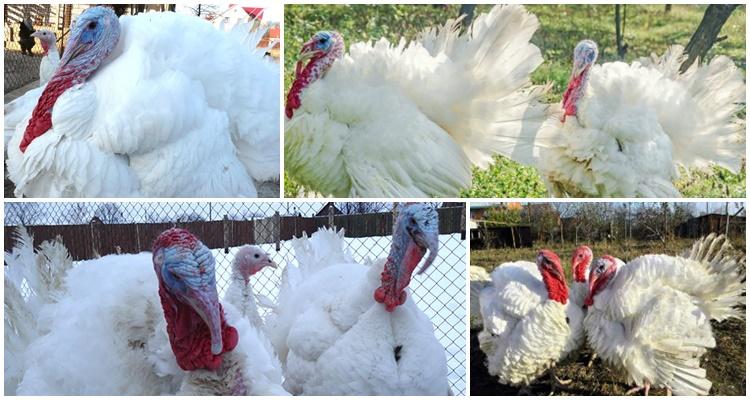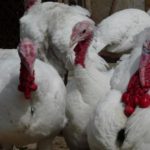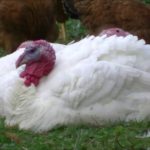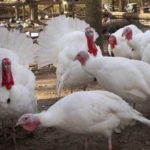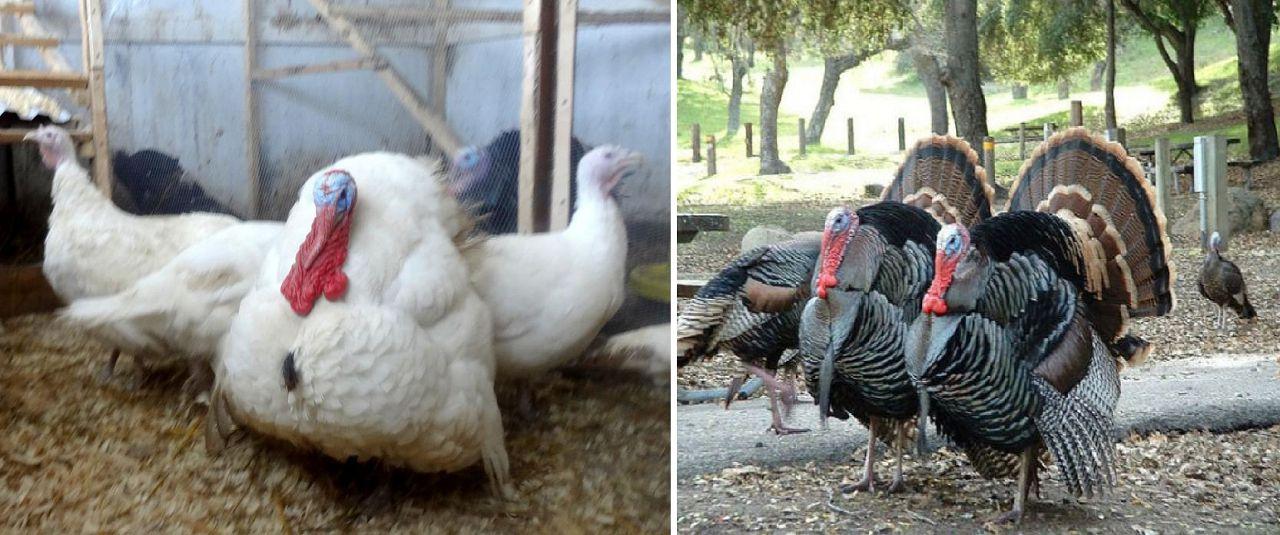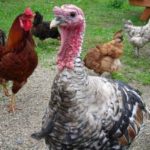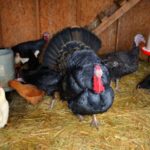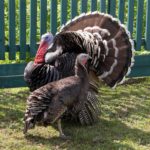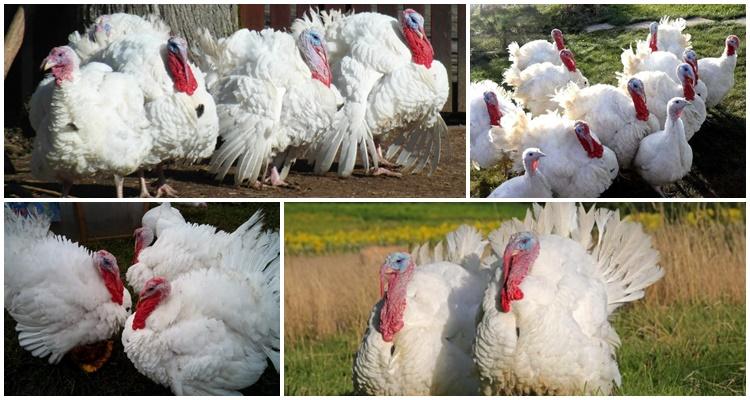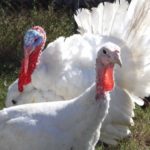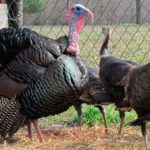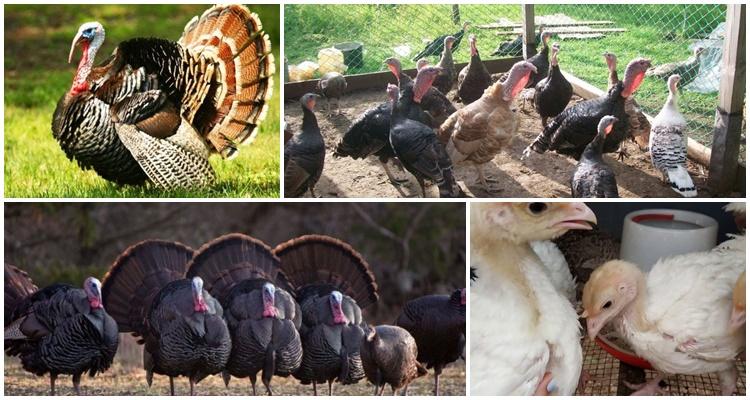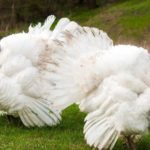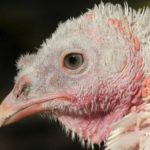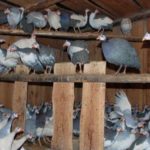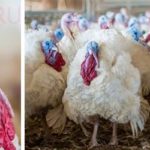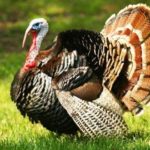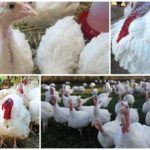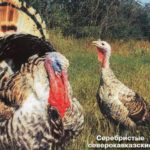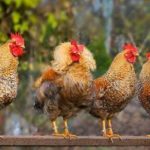There is high demand for poultry products in the consumer market. But farmers often face the question of which type of birds to prefer. Among the best turkey breeds, you can choose the meat direction or bet on selling eggs. Rapid weight gain, ease of care and other qualities have made the birds popular for breeding at home.
Breeds by purpose
Poultry is characterized by a wide variety of species. But among turkeys there are only 31 breeds.Some gain weight quickly, others are more resilient. Purpose is one of the parameters for classifying birds.
Meat
Meat breeds include broilers and crosses:
| Name | Features | Weight | Egg production per season |
| White broad-chested | Suitable for cage breeding and walking | Males, on average, weigh up to 22 kg, females - 10 | 100 |
| Bronze Moscow | They live in the poultry house and are able to gain weight on pasture. | The body weight of adult turkeys is 20 kg, females are 2 times less | 120 |
| Cross BIG-6 | Keeping on the litter no more than 1 turkey per 1 sq.m. | Weight reaches 25 kg. in males and 15 in females. | 100 |
In the wild, turkeys gain weight within 2-3 years of life. Domestic breeds are distinguished by an accelerated rate of weight gain; at 4 months, birds already reach 70% of their weight.
Egg
To obtain eggs, birds with rapid sexual maturation are selected. Brief characteristics of the best breeds:
| Name | Properties | Weight | Number of eggs |
| Virgin | Developed maternal instinct, undemanding to maintenance and food | Turkeys – 9 kg,
turkeys - 4 in total |
120 |
| Moscow Whites | Quick adaptation to new conditions, unpretentiousness | Males gain 16 kg, females - 8 | 140 |
| Cross headon | Endurance, high percentage of hatchability | 20 kg adult birds and half as much as laying hens | 180 |
Turkey eggs have a creamy taste. The color is cream with brown specks. Products quickly deteriorate due to the porous structure of the shell. Keeps in the refrigerator for less than a month.
Meat and egg
Turkeys with both meat and egg productivity are classified as universal breeds. Indicators of popular types:
| Name | Qualities | Turkey weight | Getting eggs |
| Bronze North Caucasian | Adaptability to different conditions | 14 kg – males,
7 – female |
80 |
| Fawn Uzbek | Find food on their own, rarely need feeding | The body weight of turkeys is 10 kg and females weigh 5 kg | 60 |
| Cross station wagon | Strong immunity, undemanding to food | Adult males 18 kg, laying hens – 8 | 70 |
Turkeys for meat and dairy production are compact in size, but are adapted to pasture and do not require special housing conditions.
Classification of turkeys depending on weight
Turkeys are classified not only by purpose. Poultry is divided into types based on weight.
Lungs
Turkeys reach 9 kilograms in weight, females - no more than 5. Small birds are very mobile, so breeding in a confined space is not suitable for them. Light breeds feel comfortable in free-range conditions.
Farmers consider this property an advantage. Birds independently find sources of food. Less money is required to purchase feed.
The light species also includes turkeys that appeared as a result of haphazard crossing, and not the efforts of breeders. The classification also includes decorative types of birds that have no value in terms of productivity. Breeds such as Virginia, Black Tikhoretsk and varieties of Bronze and North Caucasian turkey are recommended for cultivation.
Average
Turkeys that have gained 16 kilograms of weight and 7-kilogram laying hens are classified in the average category by weight. This type includes mainly meat-egg breeds.
Recently, cross-grade maker has been gaining popularity. The bird was brought to Russia from Canada. Turkeys are distinguished by:
- Delicious meat, which is classified as dietary due to its low fat content.
- Disease resistance.
- Fast growth.
- Presentation of carcasses.
- Endurance.
Disadvantages include cold intolerance and excessive appetite.Poultry farmers believe that the breed has a chance of spreading.
Heavy
Almost all meat breeds and crosses are of the heavy type. Compared to light breeds, turkeys weighing 30 kilograms look like giants. Females are also large and weigh from 10 to 12 kilograms. The advantages of meat breeds include high production yield and the possibility of obtaining additional income from the sale of eggs. Laying hens bring up to 100 eggs per year. Among the disadvantages, they note the demanding conditions of detention and careful care.
BIG-6 crosses have the highest productivity indicators.
Which varieties are suitable for home breeding?
The purpose of breeding birds at home is to obtain meat. Turkeys are often chosen for their ability to gain weight in the shortest possible time and high production yield. The most profitable from this point of view are heavy crosses.
Additional advantages of this type include the ability of females to hatch eggs and the relatively small volume of purchased feed. But breeding hybrid varieties requires significant effort to maintain in comfortable conditions. Poultry farmers believe that raising crosses requires knowledge of bird care.
Beginners are advised to choose breeds that are used in the region where farmers live. Local species are adapted to climatic conditions and food supply. In summer, turkeys are able to independently obtain food on a free range. The lower yield of meat and egg products compensates for the ease of maintenance.
Suitable for home cultivation:
- Hybrid converter, which is characterized by survival in different conditions, endurance and significant meat yield.
- The productivity indicators of the Uzbek fawn breed are not very high, but the birds grow well on pasture.
- White Moscow turkeys are also well suited for breeding on small farms.
Representatives of the North Caucasian breeds and black Tikhoretsk birds are not demanding in terms of care and nutrition.
The most unpretentious breeds
Turkeys can often be found in private backyards. Birds are unpretentious and quickly gain weight. But some species require less effort to grow than others.
The cross station wagon is the least demanding among hybrids when it comes to creating special conditions. The Canadian hybrid converter also quickly adapts to the Russian environment.
Most popular representatives
Heavy meat crosses and broilers gain significant weight, but the feathered giants require spacious pastures and equipped poultry houses. On small farms and private farmsteads, breeds such as fawn Uzbek, Moscow, and white broad-breasted turkeys are more common. The most popular is the mixed direction. Poultry produces dietary meat and large, tasty eggs.
The choice of breed depends on the breeding goals. By choosing the right option and creating the necessary conditions, at the end of the season they receive high-quality and in-demand products.

